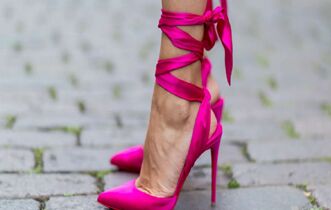女性为什么要穿高跟鞋?
|
There was a time in my life in New York City when I wore high heels almost every day. I myself did not have much power, but I worked at the United Nations, in a place where powerful people congregate. It is a place of suits and ties, skirts and silk blouses; of long speeches; of Your Excellency, and Madam Chairperson, and yes, high heels. There was an image in my mind of a certain kind of woman - professional, feminine, poised - that I wanted to embody. I saw these women daily, year after year, backstage to the halls of power, on benches by the ladies' room, changing in and out of comfortable and uncomfortable shoes.
These were power heels, and they were worn by women from all over the world. They were leopard print, or green and scaly. They were amaranthine and violaceous. They were black and shiny as Japanese lacquer, with a shock of red on the sole. Some were plain, but uncomfortable anyway. What is not in dispute is that all of these statement shoes invariably came with an appendage like an exclamation point: stiletto. When I worked in a formal office setting, high heels were never of any special interest to me beyond the fact that I liked them, and wore them, and liked wearing them. I didn't fixate. I never owned too many. If I'm honest, there were times when I liked the idea of wearing them more than the actual wearing of the shoes. Still, without high heels, at work I didn't feel quite put together. They made me feel powerful; suited up, like I was buckled in to the workday. For better or worse, the high heel is now womankind's most public footwear. It is a shoe for events, display and performance. In some settings and on some occasions, usually the most formal, it is even required. High heels are something like neckties for women. It's a shoe for when we're on, for ambition; for magazine covers, red carpets, award shows, boardrooms, courtrooms, parliament buildings and debate lecterns. |









